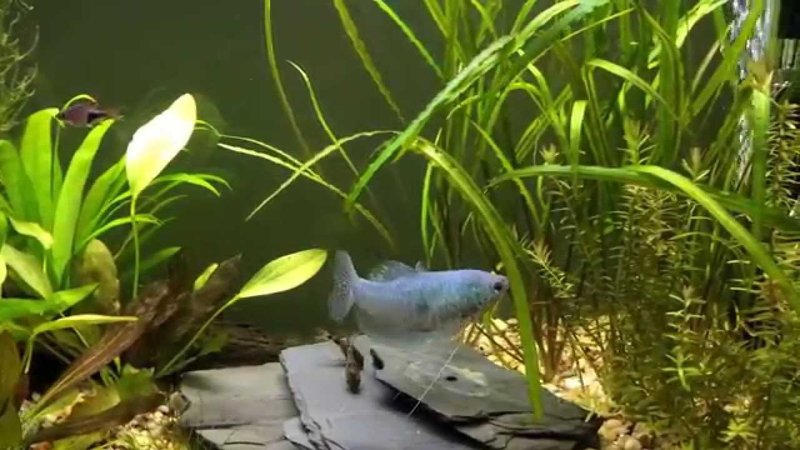
Gouramis, belonging to the family Osphronemidae, are popular in aquariums for good reasons. With their unique shapes, vibrant colors, and engaging behaviors, they can bring a sense of liveliness to any tank. Whether you’re thinking about getting a Sapphire Gourami or a Dwarf Gourami, understanding their behavior is key. It helps you create a welcoming habitat for them and ensures your aquatic friends thrive. So, let’s dive into the world of gourami behavior and explore what it all means!
Understanding Gourami Social Behavior
Social interactions among gouramis can be quite intriguing. These fish often display a range of social behaviors that can tell you a lot about how they’re feeling. For example, schooling is a common activity. Gouramis enjoy being in groups, which can reduce stress and make them feel secure. However, you might notice that they have a pecking order in their little schools.
When introducing new gouramis to a tank, watch for behaviors like fins being splayed or clamped. Fins that are spread wide can signify excitement or a friendly greeting, while clamped fins might indicate stress or discomfort. If you see this, it could be a sign that you need to rearrange your tank or give the new fish some space.
Here’s the thing: male gouramis can sometimes be territorial, especially during breeding season. If you have multiple males, you might see them flaring up or chasing each other. This behavior is normal, but if it escalates to aggression, you’ll want to step in to ensure no one gets hurt.
Feeding Habits and What They Indicate
Feeding times can reveal a lot about your gourami’s health and temperament. When gouramis are happy and healthy, they’ll come to the surface eagerly when you feed them. They typically enjoy a varied diet, including flakes, pellets, and live or frozen foods. If they seem disinterested or refuse to eat, it could indicate stress or illness.
Another aspect to watch for is how they eat. Gouramis are known for their slow and deliberate feeding style. They often take their time to nibble and enjoy their food, unlike some other fish that might gobble everything up in seconds. If your gourami is zipping around and frantically trying to grab food, it might be competition for resources or simply their personality.
If you’re noticing any suspicious behavior, like lurking at the bottom or hiding in corners, it’s time to investigate further. Stress can lead them to shy away from food, so checking water quality, tank mates, and environmental conditions can help get them back to their happy, hungry selves.
Breeding Behavior and Signs of Courtship
Breeding can bring out some of the most captivating behaviors in gouramis. If you’re planning to breed gouramis, understanding their courtship rituals is crucial. Male gouramis are known for their elaborate bubble nests, which they build to attract females. These nests can look like a frothy mass at the surface of the water.
During courtship, you might see the male displaying vibrant colors and swimming in a zigzag pattern to impress the female. It’s like a little fishy dance! If the female is interested, she’ll show signs of acceptance—like hanging around the bubble nest and cruising close to the male.
Once spawning occurs, the male will guard the eggs in the nest. This behavior indicates that he is protecting his future offspring. Watch out for signs of aggression during this time, as the male can become quite protective, sometimes even towards the female.
Stress Signals in Gouramis
Every aquarium hobbyist needs to be vigilant about their fish’s well-being. Stress is a silent threat to gouramis, and catching it early can make a big difference. If your gourami is frequently hiding or staying at the bottom of the tank, it could be feeling stressed.
You might also notice faded colors or fin damage, which can indicate both stress and poor health. This is a visual cue that shouldn’t be ignored. To help alleviate stress, check your water parameters, including temperature, pH levels, and ammonia levels, as poor water quality is a common trigger for stress in fish.
Another common sign of stress is excessive swimming or scratching against objects in the tank. This could be an indication of parasites or skin irritation. Keeping an eye on these behaviors will ensure that your gourami remains happy and healthy!
Understanding Territory and Aggression
When it comes to territory, gouramis can be a bit feisty, especially males. If you’re keeping multiple gouramis together, be mindful of their territorial quirks. Males will often establish their own little zones within the tank, and disputes can arise if another male wanders too close.
You may observe behaviors like flashing their fins or chasing each other around. This can be entertaining to watch, but if you see excessive aggression, it might be a good idea to separate them. Providing plenty of plants and hiding spots can help diffuse tensions by giving them places to retreat.
Also, note that when gouramis feel cornered or threatened, they may show signs of aggression, like nipping at tank mates. This is a classic fight or flight response, and it can escalate if you don’t address issues quickly.
Emotional Insights from Gourami Behavior
Did you know that your gourami can express a range of emotions? Yes, it’s true! They can display what some might interpret as happiness, agitation, or even boredom. For instance, when a gourami is content, you may notice it swimming gracefully around its tank, exploring its environment and interacting with tank mates.
On the other hand, if they’re feeling lonely or bored, they might just float in one spot, staring off into space. This can be a signal that they could benefit from more stimulation or company. Adding new plants or decorations can encourage more active behavior.
When it comes to social interactions, gouramis often communicate through body language. If you observe one suddenly darting away from another, it could signal discomfort or fear. Their emotions can be subtle, but knowing what to watch for helps create a more balanced and happy aquarium.
Understanding the behavior of your gourami doesn’t only enhance your enjoyment of these lovely fish; it also plays a crucial role in their well-being. By paying attention to their social interactions, feeding habits, and emotional signals, you can create a thriving environment that encourages healthy behaviors.
Whether you’re just starting out with a single Dwarf Gourami or managing a bustling community tank, always remember that observing your fish closely can reveal a wealth of information. Creating a suitable habitat with plenty of hiding spots and stable water conditions will keep your fish stress-free and flourishing.
So, the next time you glance at your gourami, take a moment to appreciate those little nuances—their shy wiggles, playful dances, or sleek glides. It’s all part of what makes them special. Happy fish-keeping, and remember to enjoy every swim!

